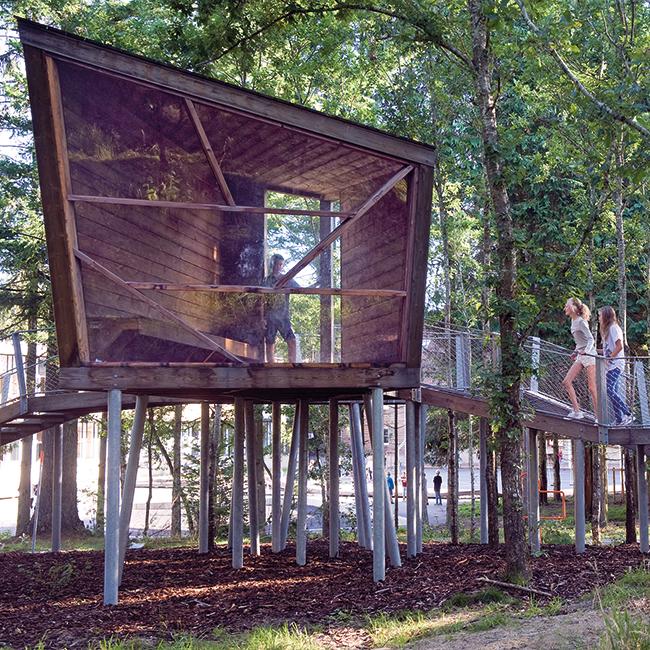Wonder Wood schoolyard and forest activity zone in Rebild
In recent years there has been an increased focus on what happens in the schoolyard between lessons, and what play, exercise and motor skills can do for learning. In an area of 12,000 m² in the Rebild municipality, VEGA landskab ApS has created an animating activity zone connecting the schoolyard with the nearby forest.
In 2013, the philanthropic association “Realdania” established a campaign to increase physical activity among schoolchildren. The campaign called for “action-packed playgrounds” that could also support “exercise teaching” and outdoor learning activities. 17 projects were selected out of 106 applicants. The “Skørping School” project was selected for realisation due to its focus on links between the school, forest and local community, and for its special aim to activate both “couch potatoes” and teenage girls.
The project has been published in “An architecture guide to the United Nations 17 Sustainable Development Goals” as a successful example of a project improving gender equality (goal 5) by including both girls and boys and making room for everyone. Research conducted after the construction of the schoolyard has shown that the wooden loop has been successful in engaging more girls in active play during breaks.

Photo: Leif Tuxen
